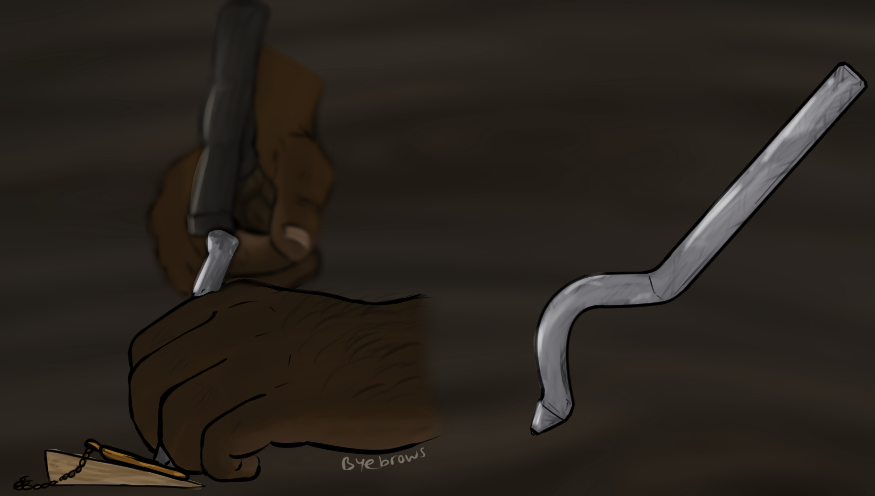Hands On Authmark
An authmark is a tool used commonly over Askvìniké as means for authentication. It helps determine the validity of precious metals, and can be used by artists, jewellers and builders as a way to stamp their signature. It is a slender metal tool, made of a dense, hard metal such steel. They come in a variety of shapes but the most common is the gooseneck which allows access to hard-to-reach places like inside a ring. It is common practice for any fine metal art to be stamped to ensure the buyer knows it is authentic; however, they have a variety of other uses.
Hands On Authmark
Hands On are a charity organisation comprised of nomadic folk who wander Askvìniké providing assistance to those who need it. Over time, criminals started to impersonate them, and the Hands On members had to find a way to prevent this.
While they couldn't stop criminals from impersonating them, they could put in place a system to identify who is really a member. The senior members crafted and distributed an authmark for each troupe's senior which is used to stamp a piece of jewellery or accessory that every member would then carry with them, and use as type of ID. The implementation of an ID system resulted in a significant drop in Hands On impersonation crimes and the citizens of Askvìniké were safer for it.
Long standing members of the organisation have multiple pieces stamped by one of these. Each troupe also have a variety of extra stamped medallions, rings and watches which are loaned to any temporary members of Hands On, and they are returned when they leave.
Legality
Currently there is a law in Askvìniké which prohibits unauthorised persons from owning, or having a Hand On authmark, or authenticated piece. Askvìniké's leaders were forced to put laws in place around owning one due to the earlier uptick in crimes relating to Hands On impersonation. The punishment for breaking this law can range from a fine for first time offenders, to up to a year in prison when deemed necessary.
There is an exception which allows someone to own a Hands On authmark or piece when not authorised. A historian (e.g. in a museum) or a collector may own a piece if it is over 500 years old AND has been stamped by a member's signature who is either no longer a member of Hands On, or they are deceased. This causes the signature to be void, and that piece could not be used as a legally authenticated ID.
There are still crimes that occur with outdated, voided Hands On pieces as majority of the public are not able to tell if it is current or not. These crimes are not common as voided pieces are often destroyed, or they are worth a large sum to collectors. This makes them very difficult to acquire.




Comments